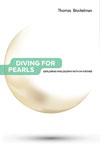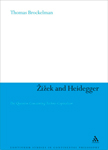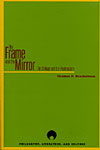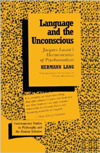Quick links
Part 1, Abstract and The End of Man
Part 2, Psychoanalysis in The Order of Things
Part 3, Seminar XIII and the object a–You are here.
Part 4, Window not mirror: Las Meninas
Part 5, The Street: Lacan reads Balthus reading Velázquez
Part 6, The poetics of the window: truth of the analyst
Part 7, Conclusion, References, Photo Credits
3 Seminar XIII and the object a
What’s interesting about Lacan’s 1965–1966 seminar—which is entitled ‘‘The Object of Psychoanalysis,’’ and which includes that discussion of Las Meninas at which Foucault is present as an invited guest—is how apparently similar is the starting point of his thought there to Foucault’s. For Lacan, too, the project of ‘‘Cartesianism,’’ of what Lacan calls a ‘‘suture’’ of the representational subject and its representation (‘‘cogito’’ and ‘‘sum’’) is going ‘‘badly’’ today; indeed, it is bound to fail.’’9 For Lacan, as Mladen Dolar paraphrases him, ‘‘in the place of the supposed certainty of the subject’s being there is just a void. It is not the same subject that thinks and that is.’’10 All representation is for a subject that cannot be included (even as excess to representation) ‘‘in the picture’’. Like Foucault, then, Lacan would have us remain suspicious of modern science’s pretentions to transparency and its ‘‘universe,’’ founded as it is upon the myth of such a transparent knowledge.
But with this like critical distance from modernist representation, the similarity between the positions of Foucault and Lacan ends—an end that, perhaps, Lacan hopes to emphasize when, soon after the resume ́ of his Descartes’-critique in the 14th session, he disparages Nietzsche’s ‘‘death of God.’’11 Whether or not he means to answer Foucault, Lacan’s turn in this session indicates the nature of his divergence from any philosophical position—even from an ‘‘anti-philosophy’’ like that in The Order of Things. But, unlike Foucault’s position, which sometimes collapses anti-modernism and anti-Cartesianism, Lacan’s critique of Descartes combines an embrace of modern science together with its critical attitude to the Cartesian project. The point, then, is to build upon modern science as somehow proposing an alternative to such a mirroring relationship between truth and knowledge; and it is in this project that the theme of Seminar XIII, the ‘‘object a’’ appears.
Leaving to others a full explication of just how Lacan’s response to Descartes both demands that he (Lacan) embrace modern science and also pass beyond its self-understanding, let me turn in my remarks to a kind of allegory for this subject in the consideration given in Seminar XIII to painting, perspective and, in particular, Vela ́zquez’s masterpiece, Las Meninas. Whatever the course of this allegory, though, we must keep our eye on its end—the emergence of psychoanalysis itself as a (in a sense the) modern science, because it is a science self-consciously split. That’s another way of saying, as will be seen, that analysis demands the theorization of the object a. On account of the differential roles of analyst and analysand, psychoanalysis marks a practice where, to oversimplify a bit, science can pursue knowledge without self-contradiction, a practice not bound by the dialectical limitations of philosophical argument as is, still, Les mots et les choses. One understanding of the object a is, thus, what appears only with this double face, this double surface, for a newly modern knowledge/truth.
Go to Part 4, Window not mirror: Las Meninas.
10 Dolar, in Zizek (1998, p. 18).
11 Lacan (SeminarXIII, Session of April 20th, p. 12).
12 Lacan (SeminarXIII, Session of January 19, p. 22).




 Language and the Unconscious: Lacan's Hermeneutics of Psychoanalysis
Language and the Unconscious: Lacan's Hermeneutics of Psychoanalysis

